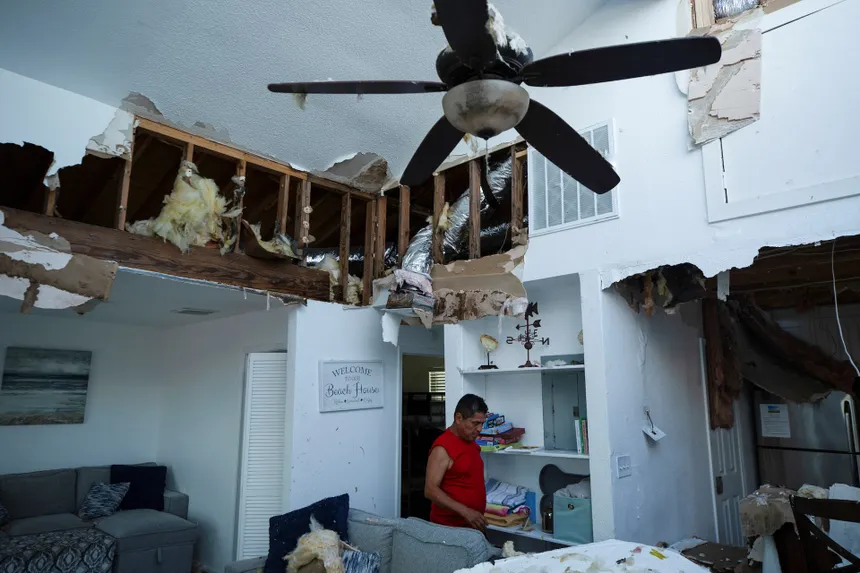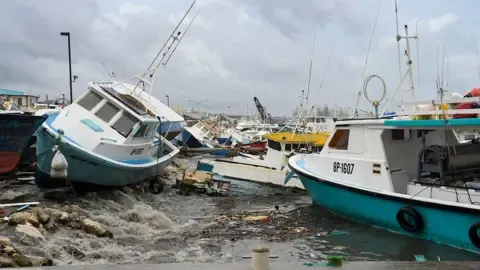The Caribbean islands were ravaged by Hurricane Beryl, the earliest storm of Category 4 strength to form in the Atlantic, fueled by record warm waters. The storm made landfall on Carriacou, one of the islands of Grenada, with winds up to 150 mph, just shy of a Category 5 storm. The National Hurricane Centre warned of an “extremely dangerous and life-threatening situation,” as thousands of people hunkered down in homes and shelters.
The storm caused devastating damage, with reports of roofs being torn off churches and schools, and a hospital roof damaged in Grenada. The Carriacou hospital had to evacuate patients to a lower floor due to the damage. Prime Minister Dickon Mitchell described the storm surge as “extensive,” and officials received reports of devastation from Carriacou and surrounding islands.
In Barbados, officials received more than a dozen reports of roof damage, fallen trees, and downed electric posts. Drones were deployed to assess the damage once the storm passed. In St Lucia, Martinique, and Trinidad, a tropical storm warning was in effect, while a tropical storm watch was issued for Haiti’s entire southern coast and parts of the Dominican Republic. A hurricane watch was issued for Jamaica.
Forecasters warned of a life-threatening storm surge of up to nine feet in areas where Beryl made landfall, with three to six inches of rain expected for Barbados and nearby islands, and possibly 10 inches in some areas, especially in Grenada and the Grenadines. The storm was expected to weaken slightly over the Caribbean Sea, but will remain a significant hurricane during its entire trek.

Hurricane Beryl
As the storm approached, officials in some southeast Caribbean islands announced controlled power outages, warned of water cuts, landslides, and flash floods, and shuttered schools, airports, and government offices. Barbadian Michael Beckles expressed fears for his island, saying that despite preparations, there were many things that couldn’t be controlled.
Hurricane Beryl strengthened from a tropical depression to a major hurricane in just 42 hours, a feat accomplished only six other times in Atlantic hurricane history. It also broke the record as the earliest Atlantic hurricane to reach Category 4 strength, surpassing Hurricane Dennis, which became a Category 4 storm on July 8, 2005. The storm’s rapid intensification was a concern for forecasters, who warned of the potential for even greater damage.
As the storm continues to move west-northwest, its impact on the Caribbean and beyond will be closely monitored. The National Hurricane Centre warned of a potentially life-threatening situation, and officials are urging caution as they assess the damage and work to reunite affected communities.











































